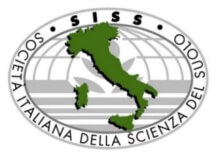Unveiling the impact of lipophilic brominated flame retardants in Danube River sediments: a deep dive into pollution sources and distribution
DOI:
https://doi.org/10.60923/issn.2281-4485/22398Keywords:
PBDEs, aquatic sediment, Danube RiverAbstract
Aquatic sediments serve as both a major sink and a potential secondary source of polybrominated diphenyl ethers (PBDEs), a class of persistent, bioaccumulative, and toxic pollutants. This study assessed ten PBDE congeners in Danube River sediments (Serbia), addressing their occurrence, spatial distribution, and potential sources. Σ10PBDE concentrations ranged from 0.52 µg/kg dry weight (War Island) to 31.21 µg/kg dry weight (Neštin), with BDE-209 as the predominant congener. Localized dominance of hepta- and penta-BDEs at Neštin and Šangaj suggested site-specific contamination patterns. Comparative analysis indicated levels comparable to or exceeding those in other industrialized regions, implicating anthropogenic activities as key contributors. Source apportionment using Principal Component Analysis identified three major pathways: (1) transport and debro-mination of higher-brominated congeners, (2) direct anthropogenic discharge, and (3) improper waste manage-ment. Hierarchical cluster analysis and Kohonen’s self-organizing maps pinpointed Neštin as a pollution hotspot. This study provides the most comprehensive dataset on PBDE contamination in Serbian Danube sediments, establishing a critical baseline for future monitoring and regulatory actions.
References
BRBORIĆ M., VRANA B., RADONIĆ J., VOJINOVIĆ MILORADOV M., TURK SEKULIĆ M. (2019) Spatial distribution of PAHs in riverbed sediments of the Danube river in Serbia: Anthropogenic and natural sources. Journal of the Serbian Chemical Society, 84(12):1439–1453. https://doi.org/10.2298/JSC190129056B
CHENG J.O., KO F.C. (2018) Occurrence of PBDEs in Surface sediments of metropolitan rivers: sources, distribution pattern, and risk assessment. Science of the Total Environment, 637–638:1578–1585. https://doi.org/10.1016/j.scitotenv.2018.05.075
CHIŢESCU C.L., ENE A., GEANA E.-I., VASILE A.M., CIUCURE C.T. (2021) Emerging and persistent pollutants in the aquatic ecosystems of the lower Danube Basin and North West Black Sea Region—A Review. Applied Sciences, 11(20):9721. https://doi.org/10.3390/app11209721
CHOKWE T., OKONKWO O., SIBALI L., MPORETJI S. (2016) Occurrence and distribution pattern of alkylphenol ethoxylates and brominated flame retardants in sediment samples from Vaal River, South Africa. Bulletin of Environmental Contamination and Toxicology, 97:353–358. https://doi.org/10.1007/s00128-016-1871-8
ENVIRONMENT AGENCY (2021) Polybrominated Diphenyl Ethers (PBDEs): Sources, Pathways and Environmental Data. Environment Agency, London. https://consult.environment-agency.gov.uk/++preview++/environment-and-business/challenges-and-choices/userplo_ds/polybrominated-diphenyl-ethers-pressure-rbmp-2021.pdf.
GIULIVO M., CAPRI E., KALOGIANNI E., MILACIC R., MAJONE B., FERRARI F., ELJARRAT E., BARCELO D. (2017) Occurrence of halogenated and organophosphate flame retardants in sediment and fish samples from three European River Basins. Science of the Total Environment, 586:782–791. https://doi.org/10.1016/j.scitotenv.2017.02.056
GOVERNMENT OF CANADA (2016) Regulations amen-ding the prohibition of certain toxic substances regulations, 2012. Canada Gazette, 150(20). http://www.gazette.gc.ca/rp-pr/p2/2016/2016-10-05/html/sor-dors201.html
GRZYWNA A., GRABIĆ J., RÓŻAŃSKA-BOCZULA M. (2023) Occurrences of Water Quality Assessment Using Improvised Water Quality Index at the Danube River, Serbia. Desalination and Water Treatment, 285:67–77. https://doi.org/10.5004/dwt.2023.29307
HU G., XU Z., DAI J., MAI B., CAO H., WANG J., SHI Z., XU M. (2010) Distribution of Polybrominated Diphenyl Ethers and Decabromodiphenylethane in Surface Sediments from Fuhe River and Baiyangdian Lake, North China. Journal of Environmental Sciences, 22(12):1833–1839. https://doi.org/10.1016/S1001-0742(09)60327-4
ICPDR (INTERNATIONAL COMMISSION FOR THE PROTECTION OF THE DANUBE RIVER) (2008) Joint Danube Survey 2 - Final Scientific Report. ICPDR, Vienna.
ICPDR (INTERNATIONAL COMMISSION FOR THE PROTECTION OF THE DANUBE RIVER) (2021) Danube River Basin Management Plan Update 2021. ICPDR, Vienna. https://www.icpdr.org.
KOHONEN T. (2012) Self-Organizing Maps. Springer, Berlin. ISBN 978-3-642-56927-2
KUKUČKA P., AUDY O., KOHOUTEK J., HOLT E., KALÁBOVÁ T., HOLOUBEK I., KLÁNOVÁ J. (2015) Source identification, spatio-temporal distribution and ecolo-gical risk of persistent organic pollutants in sediments from the upper Danube catchment. Chemosphere, 138:777–783. https://doi.org/10.1016/j.chemosphere.2015.08.001
LAKSHMINARASIMMA N., GEWURTZ S., PARKER W., SMYTH S.A. (2024) Quantifying the removal of Poly-brominated Diphenyl Ethers (PBDEs) in Physical, Chemical, and Biological Sludge Treatment Systems. Chemosphere, 351:141203. https://doi.org/10.1016/j.chemosphere.2024.141203
LEE I.S., KIM K.S., KIM S.J., YOON J.H., CHOI K.H., CHOI S.-D., OH J.E. (2012) Evaluation of Mono- to Deca-Brominated Diphenyl Ethers in Riverine Sediment of Korea with Special Reference to the Debromination of DeBDE209. Science of the Total Environment, 432:128–134. https://doi.org/10.1016/j.scitotenv.2012.05.089
LV J., ZHANG J., ZHAO X., ZHOU C., GUO C., LUO Y., MENG W., ZOU G., XU J. (2015) Polybrominated Diphenyl Ethers (PBDEs) and Polychlorinated Biphenyls (PCBs) in Sediments of Liaohe River: Levels, Spatial and Temporal Distribution, Possible Sources, and Inventory. Environmental Science and Pollution Research, 22(6):4256–4264. https://doi.org/10.1007/s11356-014-3647-6
MENG J., ZHANG Z., TIAN J., LI N., CHEN Z., YUN X., influence of Brominated flame retardants on reproductive and developmental outcomes: A systematic review. Environmental Chemistry and Ecotoxicology, 7:319–338. https://doi.org/10.1016/j.enceco.2025.01.006
MILIĆ J., ĆURČIĆ M., BRNJAŠ Z., ČARAPINA H., RAN DJELOVIĆ J., KRINULOVIĆ K., JOVOVIĆ A. (2019) The socio-economic impact timeline in Serbia for Persistent Organic Pollutants (POPs). Science of the Total Environment, 688:486–493. https://doi.org/10.1016/j.scitotenv.2019.06.161
NORMAN (2017) Network of reference laboratories, research centres and related organisations for monitoring of emerging environmental substances. NORMAN, Paris. https://www.norman-network.net
NZANGYA J.M., NDUNDA E.N., BOSIRE G.O., MAR-TINCIGH B.S., NYAMORI V.O. (2021) Polybrominated Diphenyl Ethers (PBDEs) as emerging environmental pol-lutants: advances in sample preparation and detection techni-ques. In: Emerging Contaminants. IntechOpen, London, pp: 1–22. https://doi.org/10.5772/intechopen.93858
OLANIYAN O.O., ADENIJI A.O., SEMERJIAN L., OKOH A.I., OKOH O.O. (2023) Global Co-Occurrence of Trace Elements and Additive Legacy Brominated Flame Retardants in Aquatic Environment: A Cause for Concern. Journal of Hazardous Materials Advances, 11:100337. https://doi.org/10.1016/j.hazadv.2023.100337.
PANDEY S., KUMAR P., ZLATIC M., NAUTIYAL R., PANWAR V.P. (2021) Recent advances in assessment of soil erosion vulnerability in a watershed. International Soil and Water Conservation Research, 9:305–318. https://doi.org/10.2298/GSF2123009P
RICHMAN L.A., KOLIC T., MACPHERSON K., FAYEZ L., REINER E. (2013) Polybrominated Diphenyl Ethers in sediment and caged mussels (Elliptio complanata) deployed in the Niagara river. Chemosphere, 92:778–786. https://doi.org/10.1016/j.chemosphere.2013.04.030
RUS M.-I., MUNTEANU I., VAIDIANU N., AIVAZ K.-A. (2025) Research trends concerning the Danube delta: A Specific social-ecological system facing climate uncertainty. Earth, 6(1):7. https://doi.org/10.3390/earth6010007
RUSINA T., SMEDES F., BRBORIĆ M., VRANA B. (2019) Investigating levels of organic contaminants in Danube river sediments in Serbia by multi–ratio equilibrium passive sampling. Science of the Total Environment, 696: 133935. https://doi.org/10.1016/j.scitotenv.2019.133935
SODRÉ F.F., ANNUNCIAÇÃO D.L.R., ALMEIDA F.V. (2024) Occurrence of Polybrominated Diphenyl Ethers (PBDEs) in surface sediments of an urban artificial lake in Brazil. Quimica Nova, 47(9):1–8. https://doi.org/10.21577/0100-4042.20240053
STOCKHOLM CONVENTION (2009) The New POPs Under the Stockholm Convention. Stockholm Convention, Geneva.
http://chm.pops.int/TheConvention/ThePOPs/TheNewPOPs/tabid/2511/Default.aspx.
US EPA (2023) Polybrominated Diphenylethers (PBDEs) Significant New Use Rules (SNUR). US EPA, Washington, D.C.
https://www.epa.gov/assessing-and-managing-chemicals-under-tsca/polybrominated-diphenylethers-pbdes-signifi cant-new-use.
WANG J., BI Y., HENKELMANN B., WANG Z., PFISTER G., SCHRAMM K.W. (2017) Levels and Distribution of Polybrominated Diphenyl Ethers in Three Gorges Reservoir, China. Emerging Contaminants, 3(1):40–45. https://doi.org 10.1016/j.emcon.2017.01.001
YANG W., WANG Z., JIANG Y., CUI S., YANG M., LI C., LI Y.-F., JIA H. (2025) Bioaccumulation of novel brominated flame retardants in a marine food web: a comprehensive analysis of occurrence, trophic transfer, and interfering factors. Science of the Total Environment, 962: 178428. https://doi.org/10.1016/j.scitotenv.2025.178428
YANG Y., XIE Q., LIU X., WANG J. (2015) Occurrence, distribution and risk assessment of Polychlorinated Biphenyls and Polybrominated Diphenyl Ethers in nine water sources. Ecotoxicology and Environmental Safety, 115:55–61. https://doi.org/10.1016/j.ecoenv.2015.02.006
ZHANG S., HU P., XU X., GUO J., WANG Y., HUANG Y., YU H., HOU G., LIU D., ZHAO Y., CAO Z. (2025) Mechanisms of haze influencing phase distribution and human exposure to airborne flame retardants with different uses: emission, partition, and dry deposition. Journal of Hazardous Materials, 489:137491. https://doi.org/10.1016/j.jhazmat.2025.137491
Downloads
Published
How to Cite
Issue
Section
License
Copyright (c) 2026 Maja Brborić, Branka Nakomčić Smaragdakis, Borivoje Stepanov, Maja Turk Sekulić

This work is licensed under a Creative Commons Attribution 4.0 International License.









